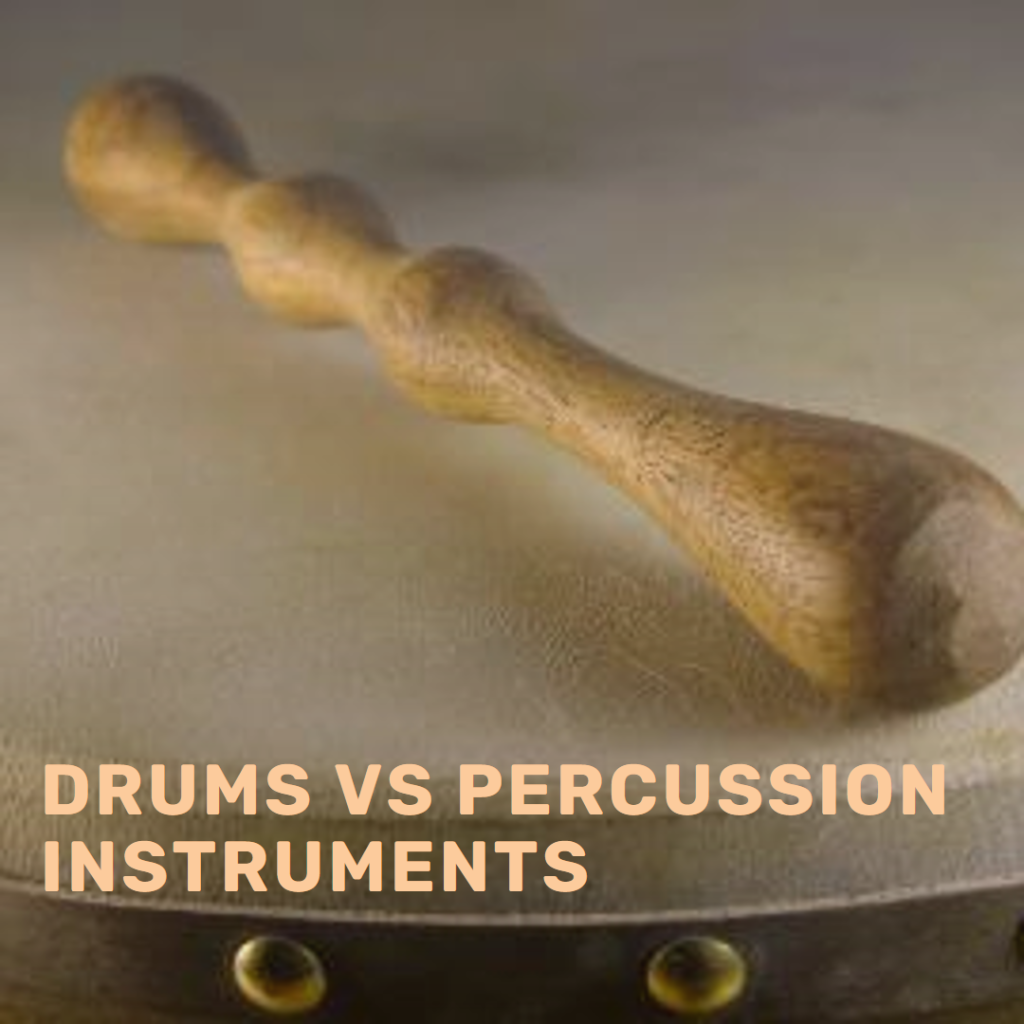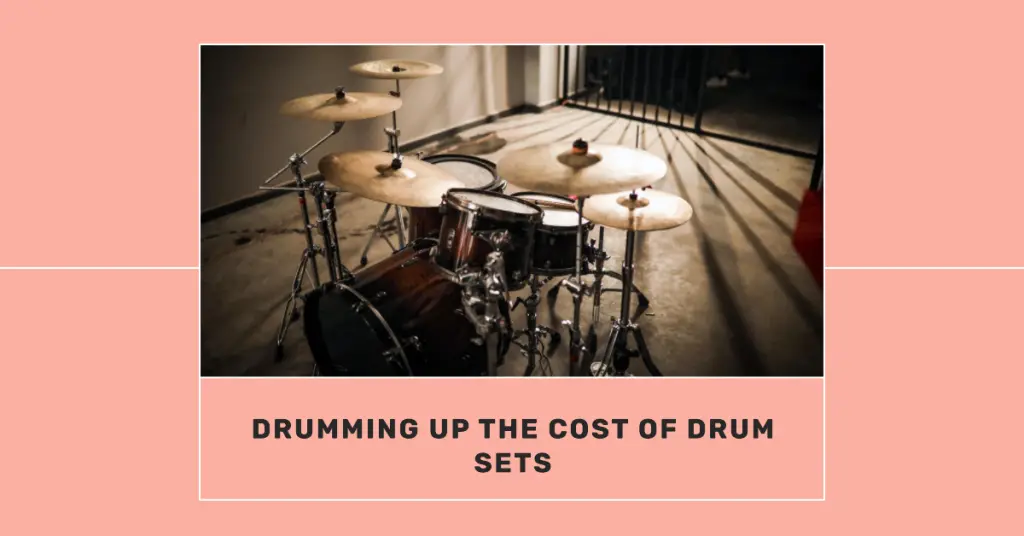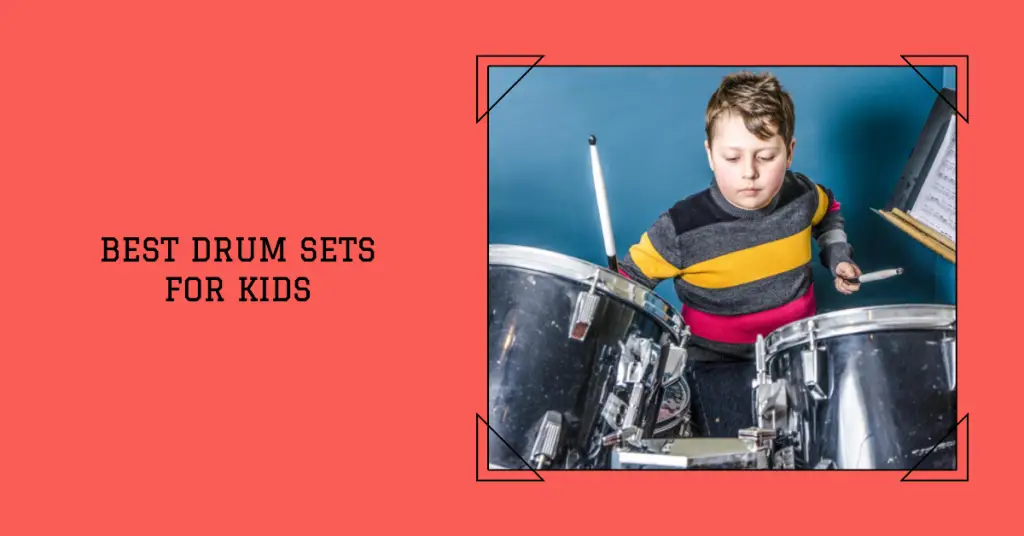Drums and percussion instruments share deep historical connections tracing back thousands of years. But in modern musical contexts, important distinctions exist between drums and the wider percussion family. Understanding these key differences helps in communicating more clearly when talking genres, ensembles, gear, and more.
This article examines drums more closely compared to other percussion instruments based on aspects like physical construction, playing technique, musical usage, and categorization. We’ll also overview some of the most popular types of drums and percussion to showcase their unique identities.
Drums – Definition and Overview
Drums produce sound through physical striking actions causing vibrations which displace surrounding air to create reverberating noise. Most drums feature the following anatomy:
Key Anatomical Parts:
- Drum Shell or Body – Hollow chamber with open bottom
- Drum Head/Skin – Thin membrane stretched across shell top
- Counterhoop – Metal or wooden ring securing drum head
- Tuning Lugs – Mechanisms adjusting drum head tension
Construction Materials:
- Shells made of wood, metal, acrylic or composite shells
- Heads use animal skin, plastic or specialized drumhead films
- Counterhoops metal, plastic or wood – affect resonance
Playing Mechanics:
- Drum sticks, mallets, or hands strike drum head
- Tension between head and shell generates vibrations and sound
- Interchangeable heads and tuning lugs change pitch/timbre
Now let’s examine how this compares with the wider percussion family.
Percussion Instruments – Definition and Overview
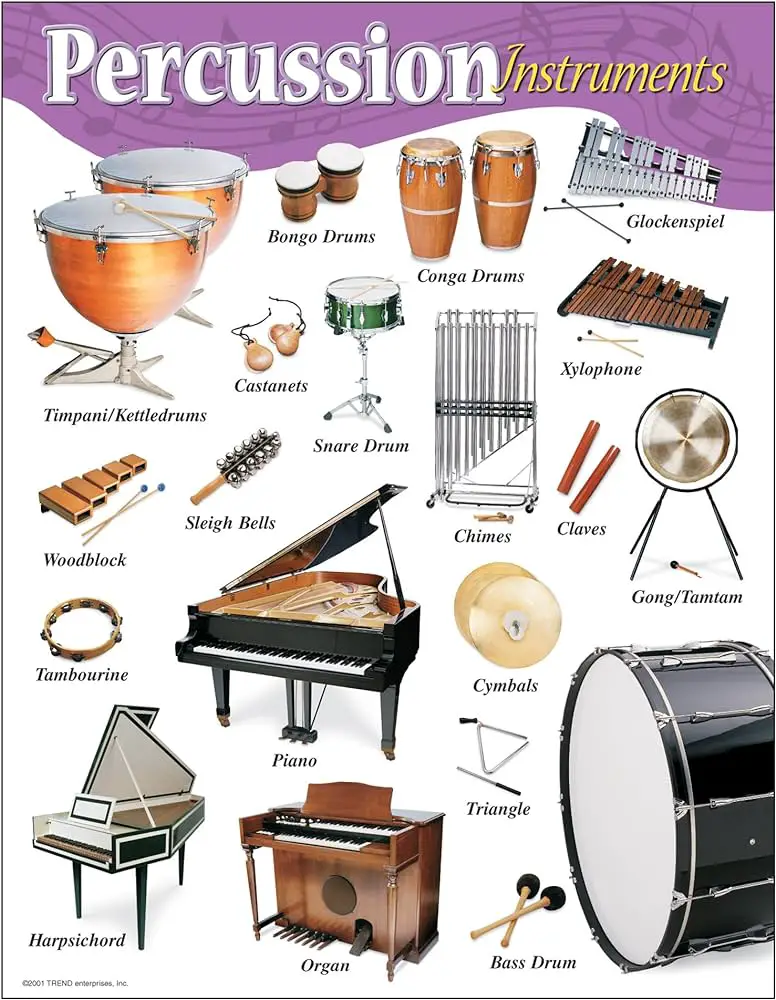
The percussion family constitutes any instrument producing sound by being struck, shaken or scraped. This encompasses drums but also all other instruments meeting that physical criteria.
Construction Commonalities
- Many feature resonant shells or hollow chambers
- Heads/skins often involved but not universally
- Materials like metal, wood, skin, polymers used
Playing Mechanics
- Struck directly via hands, sticks, mallets
- Shaken through rattling internal components
- Scraped by frictional implements like brushes
Muiscal Usage
- Melodic pitched instruments like xylophone
- Non-pitched rhythmic instruments like maracas
- Drum hybrids like timpani spanning both roles
This broader scope of sound-generating methods and musical roles sets most percussion instruments apart from standard drums. But blurrier lines exist too.
Key Differences Between Drums and Percussion
While overlaps occur, these characteristics help differentiate drums against the wider percussion family:
Physical Construction
- Drums feature resonant hollow bodies, counterhoops holding tuned skins strikingly vibrated.
- Percussion utilizes even more diverse construction like solid frames, enclosed casings, suspended metals.
Playing Interface
- Drums involve direct stick/mallet-to-skin contact, sensitive to striker implements and force.
- Percussion uses combinations of striking, shaking, scraping motions dictated by form factor.
Musical Usage
- Drums traditionally provide rhythmic foundations across most genres and ensembles.
- Percussion fills wider ranging roles like lead melodies, rhythmic textures, or special effects.
Categorization
- Drums classified by core drum type — snare, tom, bass drum etc.
- Percussion categorized into idiophones, membranophones, chordophones, etc.
So while blurred boundaries exist between drums and some keyboard/timpani hybrids, clear delineations hold for most standard percussion instruments.
Overview of Drum Types
Given those structural and usage differences, let’s survey some of the most popular true drum types:
Snare Drum
EASTROCK Snare Drum
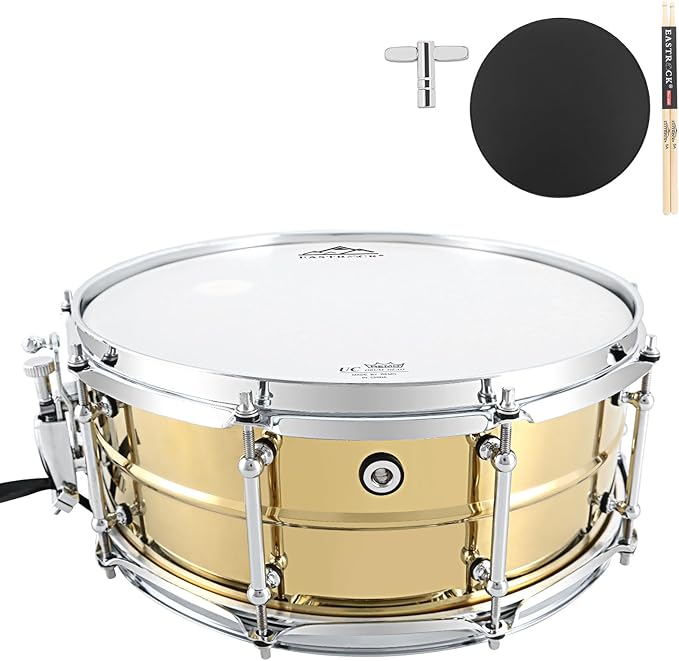
- Selected Snare Drum Set: Ideal for any level drummer’s collection or setup, especially for professionals, and this 14×5.5” snare drum is suitable for a variety of musical applications. Its sharp and powerful sound serves as a fantastic snare drum
- Features metal wires under bottom head producing signature buzzing crack
- Struck by sticks on top head – wires sizzle on bottom
- Provides rhythmic backbone and accents in ensembles
Bass Drum
Remo Irish Bodhran Drum with Bahia Bass Head
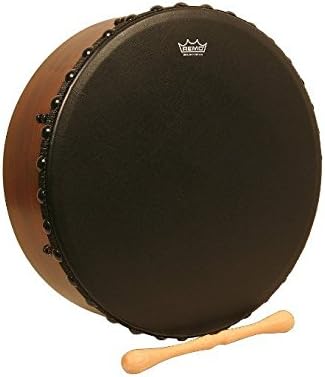
- Remo’s drum is crafted from high-quality basswood, offering durability and a rich sound. The set includes sturdy wooden drumsticks, making it perfect for musicians seeking a reliable and well-crafted instrument.
- Large drum played standing on one head via a pedal beater
- Provides thunderous low-end thump for rhythms
- Used in most drum kits and marching percussion
Tom-toms
DW Drum Set Roto Toms, Satin Lacquer
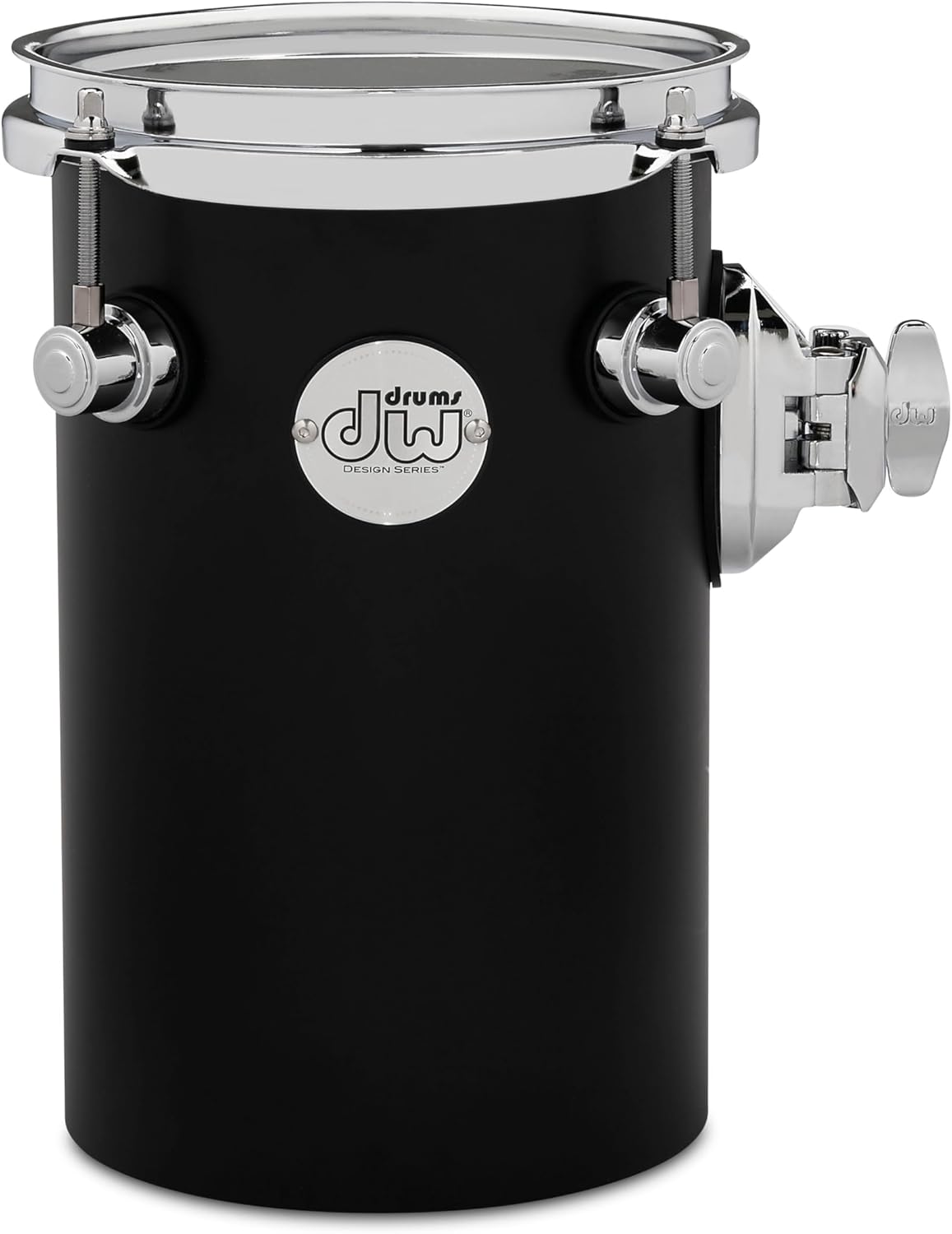
- The sturdy acrylic shell provides the perfect musical quality
- Designed with triple-flanged hoops to achieve the strongest attack
- Utilize the drums mini turret lugs for a strong foundation during any performance
- Equipped with true-pitch 50 tension rods for premium tuning
- Features a black satin body for the perfect pop of style in your drumset
- Single or grouped drums without snare wires
- Played by sticks on top head
- Available in ranges from high to low tunings
- Add melodic dimensions to standard drumming
Timpani
Remo RC3100-SA 31-Inch Renaissance Hazy Timpani Drum Head
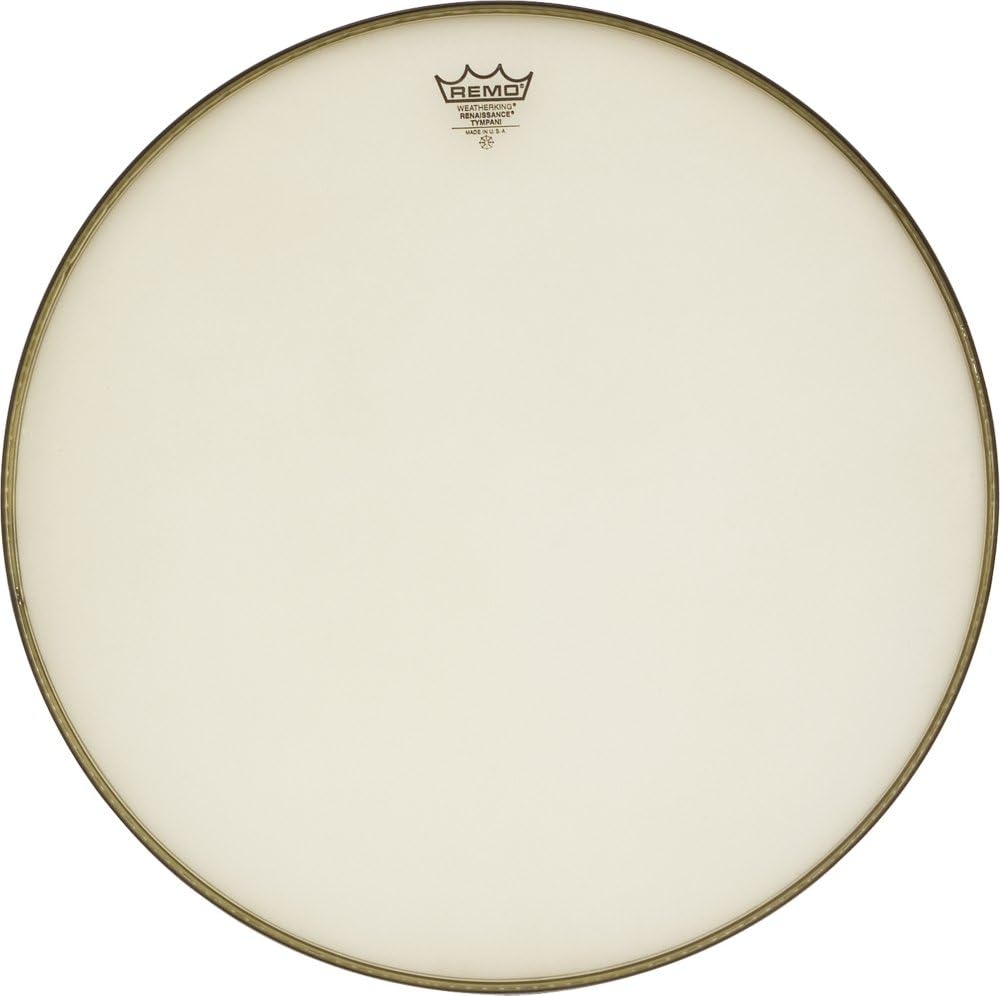
- 31″ diameter timpani hazy drum head
- Renowned for their resonance, clarity and projection
- Steel insert ring for greater tuning consistency and reliability
- Bright, clear, focused sound
- Renaissance are the preferred choice of most timpani manufacturers and concert percussionists, combining the look and feel of calfskin with warm, articulate overtones and a controlled musical sustain
- Copper bowls covered by calfskin heads
- Played with mallets and pedals alter skin tension to tune pitches
- Provide booming bass and dramatic melodic accents
Cymbals
Meinl Cymbals HCS Cymbal Set Box Pack for Drums Hihats
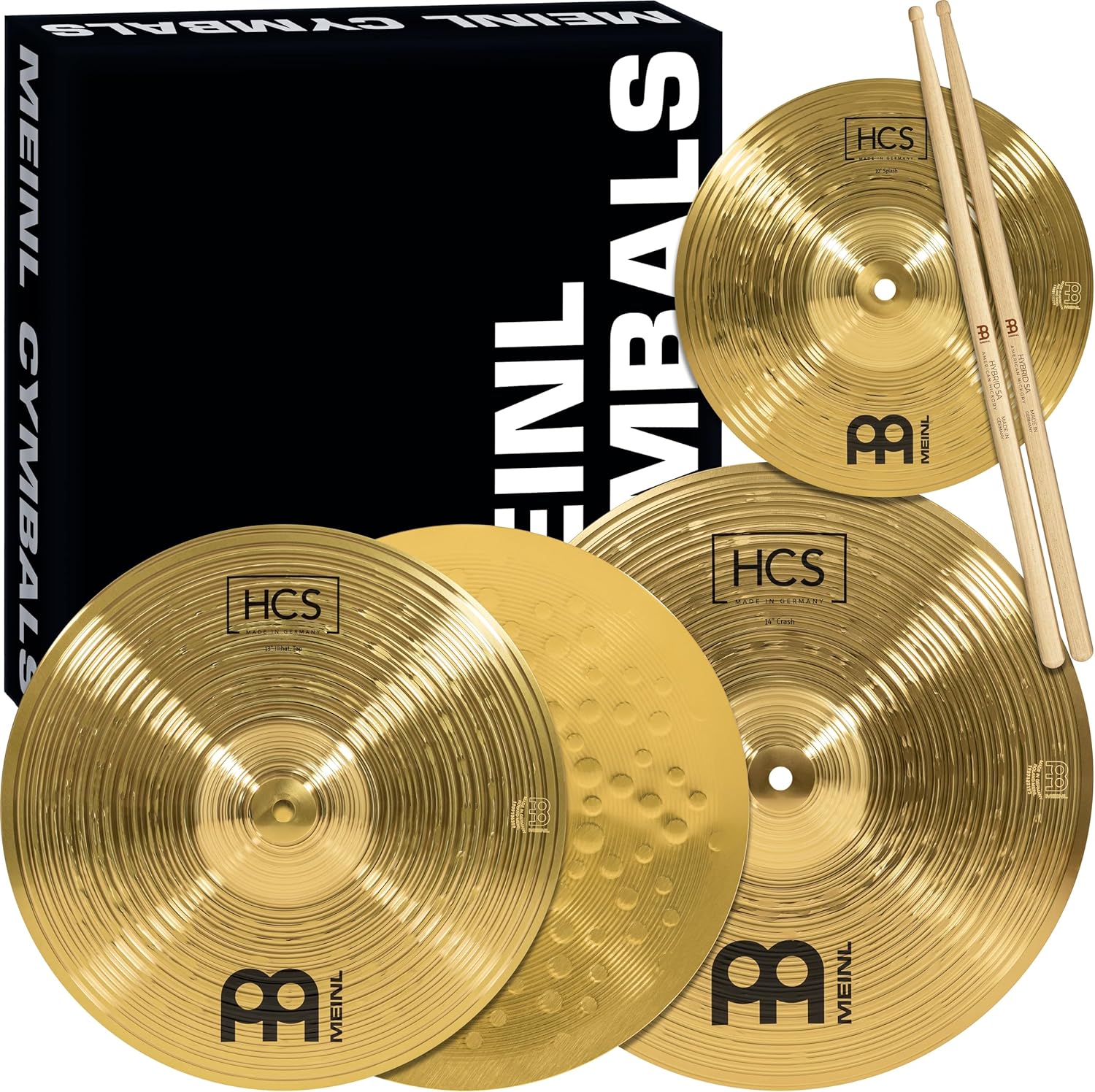
- MAJOR UPGRADE FROM “STOCK” STARTER CYMBALS: these are not those distractingly cheap, flimsy prop cymbals that come with most drum sets; Meinl HCS cymbals have impressive sound and sturdy feel geared toward beginner/intermediate players
- Concave metal discs producing shimmering tones
- Struck by drum sticks for dramatic accents and textures
- Components of most drum and percussion setups
These represent the most ubiquitous true drum types used in nearly all forms of rhythmic music. But many other drums exist globally. Now let’s examine key percussion instruments.
Overview of Major Percussion Types
Moving beyond standard drums, here are some examples of percussion instruments bringing expanded sound qualities:
Maracas
Pearl Decade Maple 5-Piece
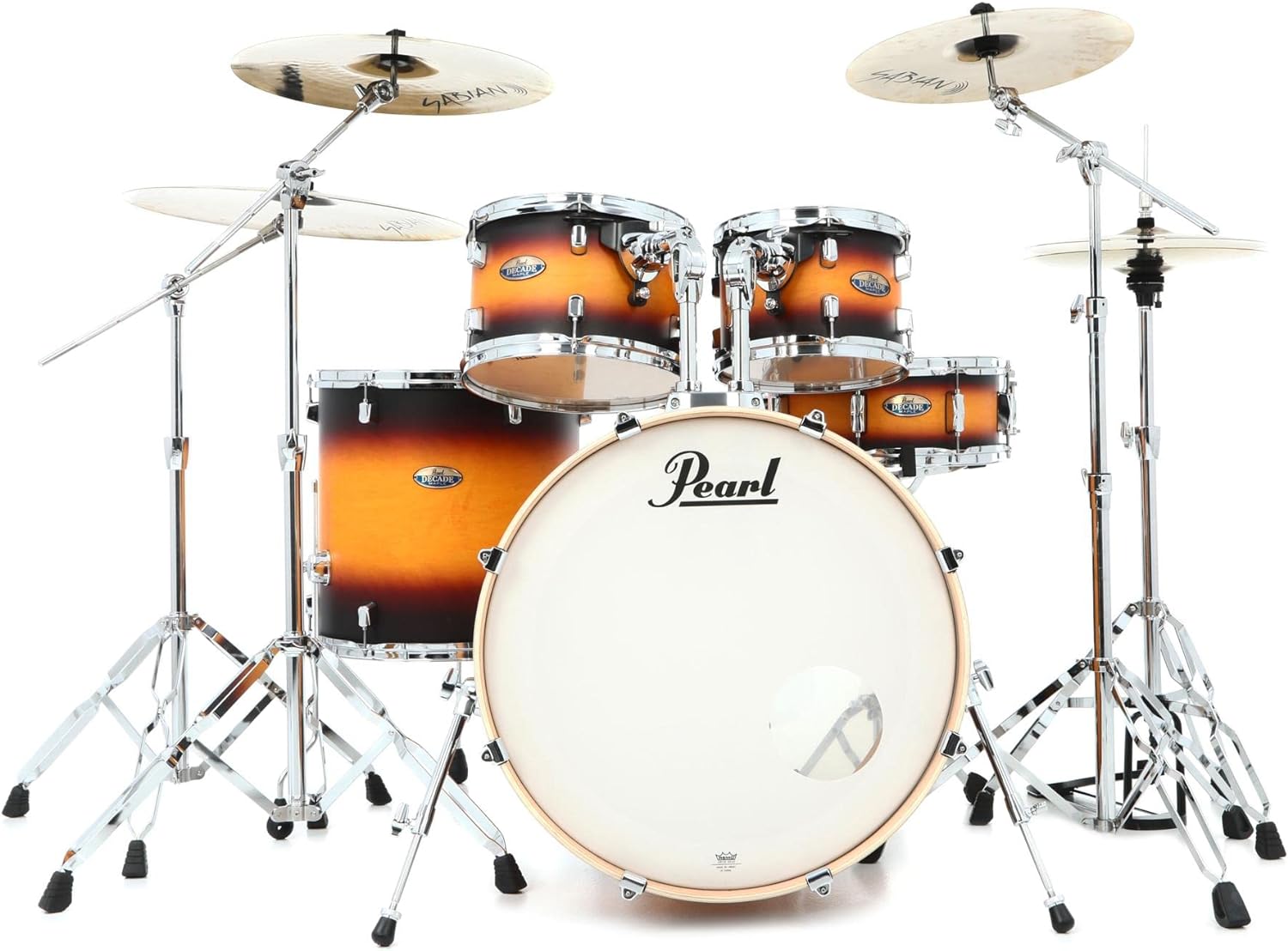
- 5-piece Maple Shell Pack with 10″ 12″ Toms
- 14″ Snare – Classic Satin Amburst
- 22″ Bass Drum
- 16″ Flo Tom
- Filled seed pod shaken by handle grip
- Provides rattling rhythmic layers
- Iconically used in Latin styles and varieties of World music
Xylophone
Professional 32 Note Glockenspiel Xylophone Percussion Kit For Adults

- 【 32 tone high-quality xylophone 】 Comprehensive 32 tone xylophone, professionally tuned and marked, with high-quality aluminum bars and standard pronunciation, suitable for beginners. The two rows do not require timbre, providing a rich range of tones, suitable for you to remember different timbre sections.
- 【 Complete Accessories 】 The clock and wood qin are equipped with 8-inch silent practice drums, 3 different drumsticks, 1 exquisite piano bag, 2 straps, and an adjustable metal frame. No additional accessories need to be purchased, just one piece can meet your needs.
- Row of wood bars each tuned to specific pitch
- Struck by hard mallets to convey melody and harmony
- Key member of mallet percussion family with orchestral roots
Triangle
Giantex Percussion Glockenspiel Bell Kit
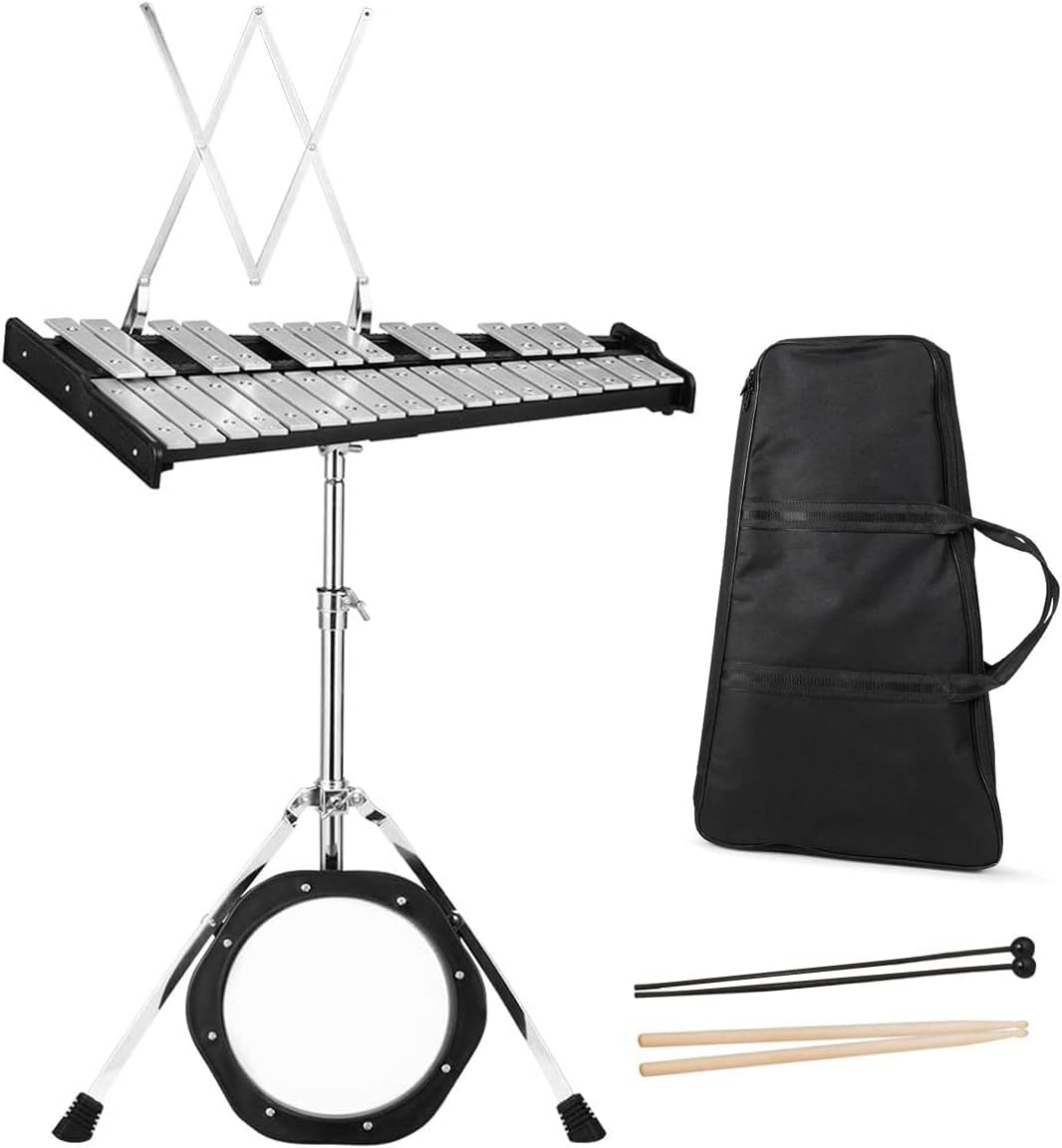
- This xylophone kit includes an electroplated stand, a music stand, an 8″ practice pad, a pair of bell mallets, a pair of wooden drumsticks and a carrying bag . All the items you need to practice percussion are ready for you at once, which it’s perfect for school beginning band students.
- If you are a beginner, this percussion glockenspiel bell kit is specially designed for you. It has two rows of keys with 30 notes (range: G5-C8) and an 8″ practice pad, which provide additional fun for your performance.
- Suspended metal loop resonates brightly when struck by beater
- Adds shimmering tonal accents in orchestras and bands
- Popular handheld percussion option
Tambourine
Groove Percussion 4-Piece Drum Set
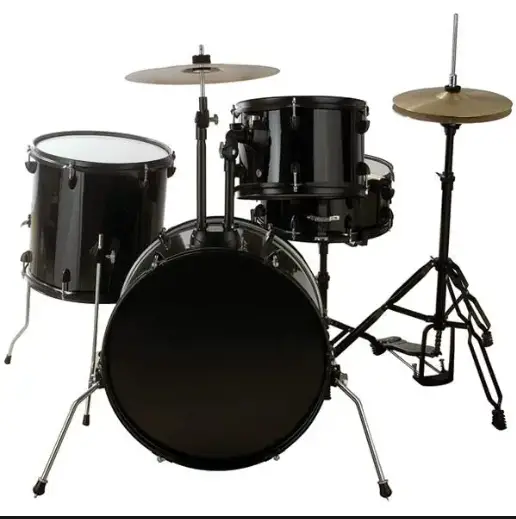
- This 4-piece drumkit is a great value offering sound quality Kit features 20″ bass drum, 14″x14″ floor tom, 12″x9″ tom, 14 ” snare and cymbals.
- Held percussion instrument made by attaching jingles/zils to circular frame
- Shaken or struck with hand
- Provides rhythmic punctuation and embellishment across genres
Güiro
Alesis Drums Command Mesh Kit
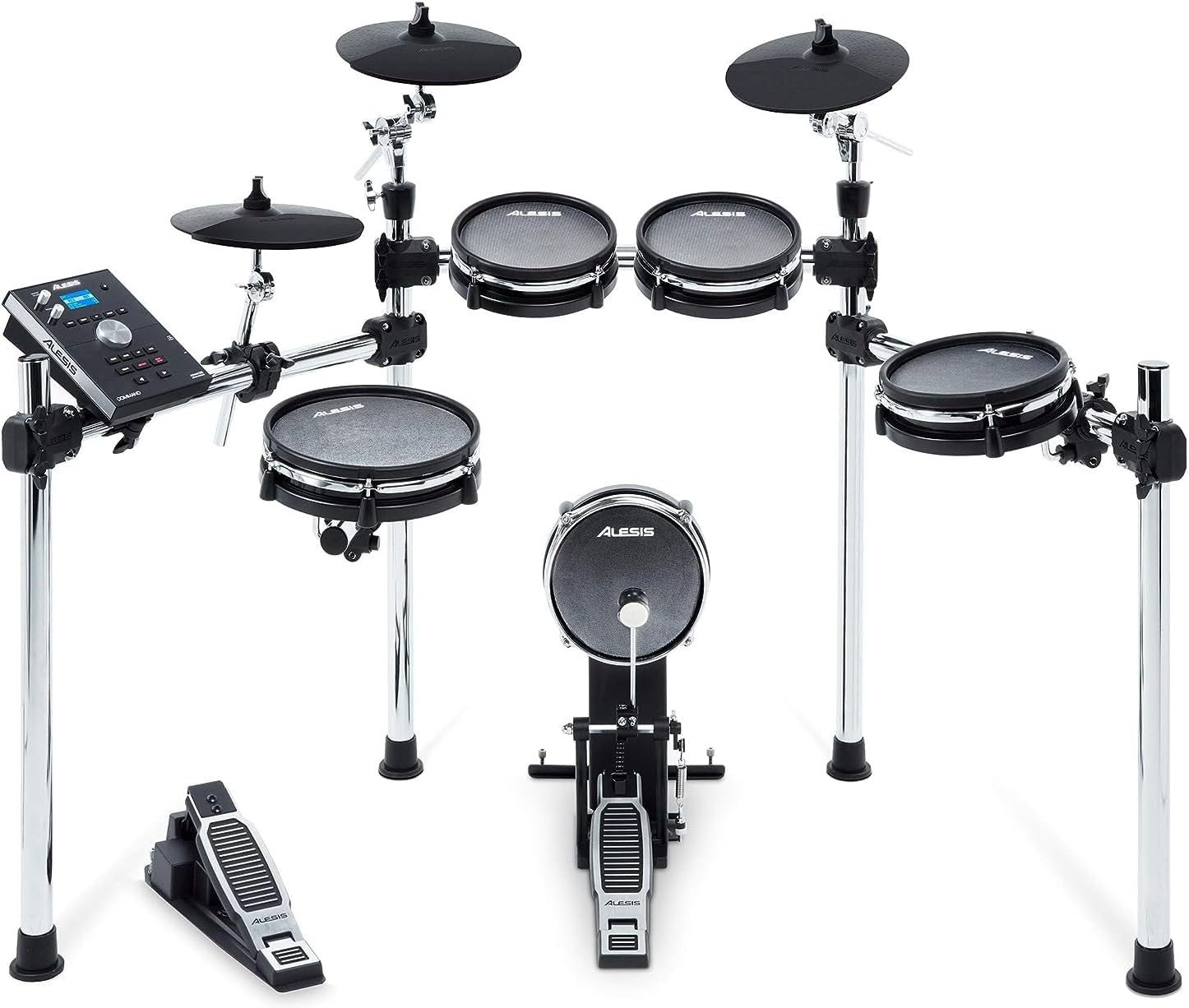
- Feel The Difference Mesh Drums Make – All mesh electronic drum kit heads deliver the most realistic, responsive and immersive playing experience drummers demand
- Trough-like open-ended gourd or wood instrument
- Grooved surface scraped by stick
- Adds texture and rhythmic layers to Latin, Jazz, World music
This sampling displays the immense tonal and textural variety existing beyond standard drums kits courtesy of the wider percussion instrument family.
Key Drum and Percussion Groupings
We can also cluster some drums and percussion instruments sharing functionality:
Beamable Percussion
- Notated on musical staves with staff lines
- Includes timpani, xylophone, marimba, glockenspiel
- Enable melodic and harmonic ideas akin to wind/string sections
Auxiliary/Accessory Percussion
- Provide rhythmic punctuation, texture and coloring
- Examples: triangle, tambourine, shakers, guiro, claves, woodblock
- Often improvise embellishments within stylistic norms
World/Ethnic Percussion
- Culturally specific drums and percussion like djembe, dhol, tabla, pandeiro
- Blend rhythmic foundations with melodic phrasing
- Associated with ceremonial and festive folkloric music
Drum Kit Percussion
- Standard component drums like snares, toms, cymbals
- Combine to form modern drum sets across genres
- Drummers integrate melodic percussion like cowbells, triangles, tambourines to expand sonic capabilities at the kit
This organizational structure captures some of the overlapping roles yet unique musical voices granted percussion instruments alongside standard drum types.
Advantages of Percussion Skills for Drummers
Even though clear differences exist, drummers benefit tremendously from developing additional proficiencies on other percussion instruments too. Reasons why include:
Elevate Musicianship
- Gain independence and limb coordination through mallets and hand drums
- Unlock new melodic roles beyond rhythmic timekeeping
Increase Listening Sensitivity
- Blend brighter percussion tones balancing cymbal qualities
- Intuit new rhythmic feels from diverse cultural instruments
Widen Creativity and Expression
- Add exotic spices like shakers, triangles and vintage sounds
- Sculpt drum kit textures and vibes otherwise unachievable
Improve Ensemble Communication
- Build camaraderie collaborating with percussion sections
- Lead productive rehearsals coaching parts
Enjoy Wider Professional Opportunities
- Meet bandleader preferences for auxiliary percussion skills
- Facilitate earning by gigging across more instruments
The symbiosis runs both directions too – malleting technique from xylophone directly improves snare drum rudiments and stick control! So while differences exist between percussion and drums, intermixing these worlds pays creative dividends.
Conclusion
In summary, crucial distinctions hold between drums and the wider percussion instrument family spanning construction, playing mechanics, musical roles and categorization. But learning to blend these diverse sound qualities and functions helps drummers evolve more complete musicians.
Hopefully this breakdown of how drums and other percussion instruments compare and contrast provides clearer communications for educators, music directors, drummers and all players. Mastering the lexicon allows conveying needs more easily at rehearsals, sessions and performances from both the drum throne and conductor’s podium.
Any drummer also limits potential creativity without exploring instruments beyond the standard kit like shakers, triangles and mallets. Supplementing the dynamic voice of drums with even brighter percussion textures makes drum

